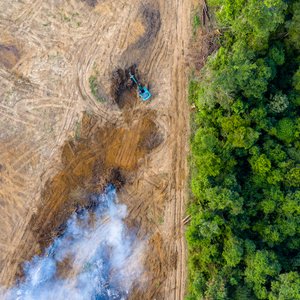The NOAA Office of Aquaculture invites abstract submissions for oral presentations at the 41st United States - Japan Natural Resources (UJNR) Scientific Symposium, focused on “Advanced Aquaculture Technologies.” The UJNR Aquaculture Panel is a cooperative research exchange between the U.S. and Japan, jointly addressing environmental and technical issues that affect the aquaculture industries of both nations.
This year’s Symposium is a venue to exchange original, high-quality research on new and developing technologies that give promise to improve or revolutionize aquaculture. Based on the key bottleneck issues identified at the 39th scientific symposium related to health, growth, and value of aquaculture products as seafood, the focus is on advanced science and technical issues that support and promote the industry. State of the art and advanced technologies that address any of the following are included in this theme: nutrition, control of maturation, regulation of fish growth, control of product quality, development of vaccines and other fish health management measures, and other topics which utilize the application of gene information or other advanced technologies.
The 41st UJNR Scientific Symposium will be held in Sapporo on the island of Hokkaido, in northern Japan. Information on registration, accommodations, and field excursions following the Symposium will be forthcoming.
Abstract Submission:
Abstracts and a 3-5 paper annotated bibliography are due August 15, 2013.
Submit Abstracts and annotated bibliographies to Marie Fujitani, with subject line “UJNR Submission”
Abstract and Annotated Bibliography Guidelines
Abstract: Presentations are 20 minutes long (including time for questions). Your abstract should clearly and succinctly outline the purpose, methods, and conclusions of the research that will be presented at the symposium.
Abstracts should be less than 500 words in 12 point Times New Roman font in the following format:
Title
Presenting Author’s Email
Author List with Contact Information for each author (name, affiliation, city, country, email)
Abstract Text
Annotated Bibliography: A contribution (3-5 key papers) to an annotated bibliography on the topic of your presentation at the symposium is required prior to the meeting (along with the abstract). This requirement replaces the literature exchange previously done by UJNR. The goal is to focus the exchange of literature citations on the topic of the science symposium and to allow for experts in the field to highlight key papers from each country to assist their counterparts from the other country to look deeper into the topics presented. This will be especially helpful to the U.S. members, as much of the literature published in Japanese is difficult for U.S. researchers to access or understand. These key works should be followed by a short description of the study, the results, and the reasons why the author considers it a key work. Key works need to relate to the topic of your presentation. Key papers could be your own work or that of other scientists. As much as possible, key works should be from your own country. An example is given below to aid in formatting. Reprints or pdf files of key papers would be appreciated, but are not absolutely necessary. A combined annotated bibliography of key papers on the topic of the symposium composed of the contributions by all the scientists will be published with the proceedings.
Example of Annotated Bibliography:
Mozaffarian, D., and E. Rimm. 2006. Fish intake, contaminants, and human health: Evaluating the risks and benefits. JAMA, Vol:296:15. Pp 1885-1899.
The authors for the first time present a comprehensive human health model based on concentrations of mercury, dioxins, polychlorinated biphenyls and long chain n-3 fatty acids for fish and project the impact of increased seafood consumption in the US on the population’s health. This model accounts for the increased risks associated with consumption of contaminated seafood along with the benefits from increased consumption of long chain n-3 fatty acids. Overall the authors predict that increasing the per capita consumption of seafood in the United States from 16 to 26 lbs/person (1-2 servings per week of species high in n-3 fatty acids) would result in a decrease in coronary death by 36% and an overall decrease in total mortality of 17%. Further the authors provide the amounts to consume of various species and the cost to provide the benefits associated with seafood consumption. Implications for target nutrient and contaminate levels in aquacultured fish can be derived from the information presented in this paper.
All materials are to be provided in a standardized computer format (MS Word). The unedited abstracts and annotated bibliography will be available at the symposium. Please email the abstract and annotated bibliography to Marie Fujitani by August 15, 2013, with subject line “UJNR Submission”
Travel Awards for US participants
UNJR Travel Assistance
If you are interested in receiving travel assistance for the 41st UJNR symposia, the following must be completed and submitted to Marie Fujitani along with your abstract submission by August 15, 2013.
To apply for travel assistance in addition to your abstract submission please answer the following questions:
Are you looking for an active collaboration with a Japanese scientist? If so, what area(s) are you interested in collaborating?
Do you foresee yourself continuing this collaboration for an extended period of time and participating in UJNR in the future?
Have you presented at a UJNR either in Japan or the U.S. before? If so, what year and where?
Do you agree to submit the items outlined below on time?
We will be making travel awards based on three criteria:
How well your presentation topic relates to the symposia topic and matches with a Japanese presentation
Desire to develop collaborative projects with the Japanese
Past history with UJNR
What we need from you by August 15, 2013:
1. Presentation abstract
2. Annotated bibliography that contains 3-5 references
3. Answers to travel award questions
What we need from you by April 2014:
1. 4-8 page paper that covers the information you presented. Details are in a guide to
authors that will be supplied.
Contacts:
Abstract Submissions and General Questions: Marie Fujitani
General UJNR Questions: Mike Rust







